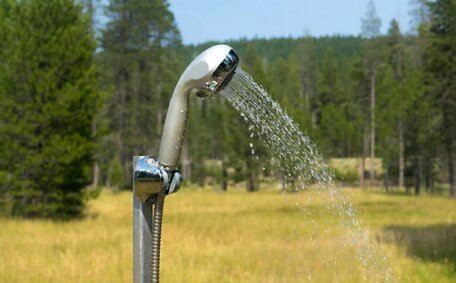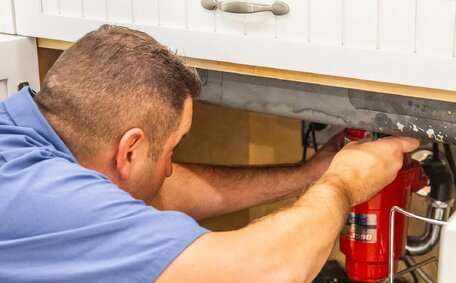Introduction to cleaning a gas stove
Regular cleaning of your gas stove is a key aspect of home upkeep.
Allowing grease, food residue, and spills to build up over time can create unsafe cooking conditions and negatively impact the stove’s efficiency. This article outlines a detailed guide for meticulously cleaning every component of your gas stove, from grates to burners and the stovetop.
Proper cleaning techniques ensure safe operation and peak performance of your gas stove, including removing stubborn stains and keeping gas components pristine.
This guide details the removal of burners and offers tips for cleaning those hard-to-reach areas.
Breaking down deep cleaning into manageable steps and using appropriate tools simplifies the process. We’ll cover what’s necessary to proficiently clean your gas appliances, ensuring a sparkling and efficient stove.
Safety precautions when cleaning a gas stove
When cleaning your gas stove, safety should always come first. Ensure the gas stovetop and all components are completely cool before starting any cleaning tasks. Additionally, make sure all controls, including the stove knobs and the main gas valve, are turned off.
In your kitchen, exercise caution with cleaning agents like vinegar, lemon juice, baking soda, and dish soap. Ventilate the space by opening windows or engaging exhaust fans, and don protective gloves.
Be vigilant to prevent liquids or cleaning paste from entering the stove’s burner head ports or the ignition system. Cover these openings with a piece of tape or aluminium foil while scrubbing the knobs burner components and surrounding areas. Avoid using excess amounts of water that could leak underneath the stove or into vulnerable internal components.
Before returning the burner caps, grates, and other removable parts, ensure they are completely dry to prevent any issues reigniting the pilot lights. Check your owner’s manual for proper storage guidelines if removing knobs.
Following basic safety measures allows you to thoroughly clean your gas stove without worry. Pay special attention to hazard warnings when using any flammable or corrosive cleaners. With reasonable precautions taken, you can tackle stove cleaning confidently.
Tools and supplies needed
Cleaning a gas stove effectively requires having the right supplies on hand. Here are the most essential items you’ll need:
- Mild dish soap or an eco-friendly liquid cleaner
- Baking soda
- White vinegar
- Soft cloths and sponges (non-abrasive)
- Toothbrushes or other small scrub brushes
- Aluminium foil
- Latex gloves
- Spray bottles to mix cleaning solutions
- Old toothpicks or needles
Use a mildly abrasive paste of baking soda and water for heavy-duty buildup on cast iron grates. You can also try mixing dish soap with warm water or a white vinegar lemon solution for extra cleaning power against grease.
Before you get started, do a quick check of all gas stove burners, and ensure you remove grates to identify problem areas needing special attention. This allows you to tailor the supplies to the unique cleaning challenges of your gas stove.
Removing and soaking the grates
Before you begin to clean burners and grates, wait until your stovetop has completely cooled. Then, carefully remove all grates and set them aside to let the rest of your stove components cool on a protected surface to avoid scratches.
Fill your sink or a large bucket with warm soapy water to soak the pan supports and grates. Add baking soda to the water for enhanced cleaning power against stuck-on food and grease.
Immerse the stove grates in the soapy solution for thorough cleaning. Allow them to soak briefly to loosen debris. For tougher grime, consider an overnight soak.
After soaking, if required, gently scrub away remaining dirt, oil, and burnt food from the grates with a soft-bristle brush, sponge, or cloth, avoiding abrasive materials that could scratch the surface.
Rinse thoroughly with clean water to remove all soap residue from coil burners of your electric stove’s components, just as you would with any electric coil stove’s parts. Make sure no debris remains trapped between grate bars or edges. Allow grates to completely air dry before replacing onto the stove.
Cleaning the burners and burner caps
Cleaning the grates burner caps helps remove built-up grease and food residue that can hinder flame performance. Start by carefully removing the caps and heads from the stove. Refer to your owner’s manual if unsure of how to properly remove them without damage.
Place burner caps heads in a bowl of warm, soapy water to soak. Allow them to soak for minutes then scrub off any lingering residue. For tough grease stains, try adding one part white vinegar to one part water or use lemon juice for the dilution.
Use an old toothbrush, pin needle, or stiff wire to carefully clear any blockages in burner heads, caps, or ignition holes, taking care not to enlarge or scratch these areas.
Thoroughly scrub the burner heads and caps with a baking soda paste to remove grime, then rinse well under hot water with a soft cloth or non-abrasive sponge.
Make sure each burner component, including the correct burner cap, is completely dry before reattaching to the stove. Check that the cap should fit snugly and sit flush with the base and tops to allow proper gas flow and ignition.
Regular burner cleaning maintains consistent flames and prevents uneven heating, difficult ignition, and potential gas flow blockages by revealing issues early.
Using baking soda paste on the burners and grates
A baking soda paste is an effective homemade method embodying how clean stove burners should be for tackling stubborn stains and baked-on grease on your range’s burners and grates. To make the paste, slowly mix baking soda with just enough water to form a thick, spreadable consistency.
Pre-soak burner components and grates in warm, soapy water to loosen grime. Then use a toothbrush, soft cloth, or non-abrasive brush to spread the baking soda paste over dirty areas.
Let the paste work for 5-10 minutes, then rinse everything thoroughly.
This allows it time to break down grease and lift burnt food residue. After soaking, use gentle circular motions with a brush or cloth in hot soapy water to scrub away residue.
Baking soda paste, as a gentle abrasive, effectively removes tough stains without damaging metal or enamel and is an eco-friendly alternative for gas hob cleaning.
Be sure burners, caps, and grates are completely dry before reattaching them to your stove.
Choosing the right cleaners for different stove surfaces
When cleaning the surface of your gas stove, select cleaners suitable for the specific finish to avoid damage:
Stainless Steel Surfaces
Clean your stainless steel gas stove top with a stainless steel cleaner or a warm water and dish soap solution, using a damp cloth to gently remove grease without scratching the surface.
Glass/Ceramic Cooktops
To clean glass stove surfaces or ceramic cooktops, use a store-bought glass cleaner or mix equal parts vinegar and water. Utilise a soft cloth for lifting grease and food remnants, and avoid harsh chemicals or scouring pads on delicate glass surfaces.
Porcelain Enamel Surfaces
Mix baking soda and water into a gentle scrubbing paste for porcelain enamel stovetops. Steer clear of strong alkaline or acidic cleaners to protect the enamel.
Tailoring your cleaners to your stove’s specific surface material ensures a clean stovetop, safe, effective cleaning without posed risks of scratches, discoloration, or wearing down finishes prematurely.
Ensuring everything is completely dry before reassembling
After cleaning, it’s essential to completely dry all parts before reassembling your stove. Any moisture left behind poses safety hazards and potential functionality issues.
Carefully dry all burner heads, caps, bases, grates, drip pans, and the stove surface, including the ignition port itself. Use a dry microfiber cloth or soft towel to remove excess water, including in hard-to-reach crevices and ignition ports. Let all parts air dry naturally before reassembly, avoiding external heat sources to speed up the process.
Check that no moisture remains trapped between the burner base and stove surface. Insert a slip of paper towel to absorb hidden droplets if needed. Ensure the rubber gaskets around the burner bases are entirely dry as well.
Once fully dry, carefully reattach the burner caps, making sure they sit flush and level on the burner bases to allow proper gas flow and flame ignition. Securely replace grates and any other components removed during cleaning.
Taking the time to guarantee everything is moisture-free prevents issues like metal corrosion, impaired gas flow, or failure to ignite pilot lights due to lingering droplets. This critical step protects against hazardous situations and ensures optimal stove performance after a thorough deep clean.
Routine care and maintenance
Maintain your gas stove’s safety and efficiency by wiping the stovetop with a soft, damp microfiber cloth after each use, preventing food particles from baking on and preserving its clean shine.
For deeper cleaning, thoroughly wipe gas burners, caps, bases, grates, and stovetop monthly with a damp cloth, and consult this guide for best practises. High-use stovetops may require more frequent deep cleans.
A splash of white vinegar in warm, soapy water can enhance grease removal and discourage adherence, simplifying post-use wipe-downs.
Clean visible grime, food splatters, and spills from your gas cooktop as soon as it’s cool to prevent staining and baked-on buildup over time.
If faced with stubborn stains or heavy grease buildup, consider enlisting professionals like those at Penrith Plumbing, who have the expertise and industrial-grade degreasers to rejuvenate gas stoves. We also offer routine maintenance and repairs for long-term safe operation.






